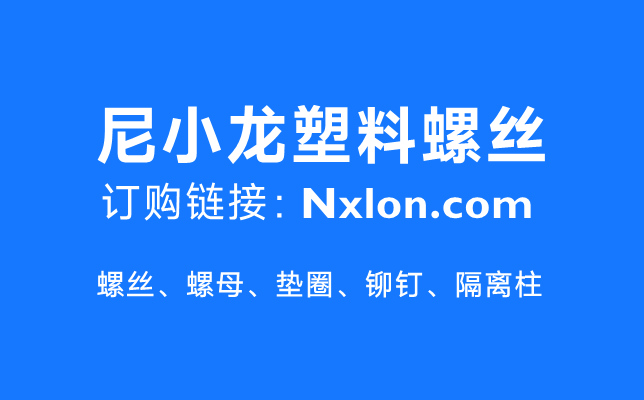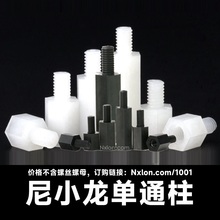Socket Countersunk Head Screw
©Nxlon.com D/T:

The socket countersunk head screw is a common type of fastener. The following is a detailed introduction to the socket countersunk head screw:
Structural Characteristics of the Socket Countersunk Head Screw
Head Shape: The head is designed as a countersunk head, in the shape of a frustum of a cone. This enables the screw to be flush with the surface of the connected part after installation, maintaining the flatness of the surface. It is aesthetically pleasing and does not affect the assembly or operation of other components.
Hexagonal Socket: There is a hexagonal socket in the center of the head, which is used to insert a hexagon socket wrench to tighten or loosen the screw. The design of the hexagonal socket makes the applied torque more uniform, effectively preventing the wrench from slipping. Compared with heads of other shapes, a larger torque can be applied to achieve a tighter connection.
Threaded Shank: Similar to ordinary screws, it has a threaded shank. There are various specifications for the threads, such as metric threads like M3, M4, M5, etc. Different specifications are suitable for different connection requirements. The fastening connection is achieved through the cooperation between the threads and the threaded holes of the connected parts.
Specification Dimensions of the Socket Countersunk Head Screw
Diameter: The common diameter range is from M3 to M20 or even larger. Socket countersunk head screws with smaller diameters are often used for the connection of electronic devices and small mechanical parts; those with larger diameters are used for the connection of some mechanical structures and building components that need to bear greater tensile or shear forces.
Length: There are diverse length specifications, generally ranging from a few millimeters to dozens of millimeters, such as 6mm, 8mm, 10mm, 16mm, 20mm, 30mm, etc. The selection of the length depends on the thickness of the connected part and the specific requirements of the connection. It is necessary to ensure that after the screw passes through the connected part, there is enough thread length for tightening the nut or for effective cooperation with the threaded hole.
Materials and Surface Treatments of the Socket Countersunk Head Screw
Materials: It is usually made of medium carbon steel or medium carbon alloy steel, such as No. 45 steel, etc. After appropriate heat treatment, it can obtain high strength and toughness to meet the requirements of general mechanical connections. For some occasions with special requirements, stainless steel materials, such as 304 stainless steel and 316 stainless steel, which have good corrosion resistance, are selected and are suitable for corrosive environments such as humid conditions and acid-base environments. High-strength alloy steel may also be used to meet the needs of special working conditions such as high load and high stress.
Surface Treatments: Common surface treatments include galvanizing, nickel plating, blackening, etc. Galvanizing treatment can form a zinc layer on the surface of the screw, effectively preventing rust. It has a low cost and is widely used. Nickel plating treatment can make the surface smoother and more beautiful, and at the same time enhance the corrosion resistance and wear resistance. Blackening treatment forms a black oxide film on the surface, which has a certain rust prevention ability and a simple appearance. It is often used in occasions where there are not high requirements for appearance but a certain protective performance is needed.
Application Fields of the Socket Countersunk Head Screw
Electronic Devices: Due to its countersunk head design that can ensure a flat surface and its smaller specifications that are suitable for precision components, it is often used for the assembly of the casings of electronic devices and the fixing of circuit boards, such as computer cases, mobile phone casings, tablets, etc. It can not only achieve a firm connection but also not affect the appearance and internal space layout of the devices.
Mechanical Manufacturing: It is quite common in the connection of components of various mechanical equipment, such as the connection of some thin plates, covers, brackets, etc. in machine tools, automobile engines, industrial robots, and other equipment. It can make the connection surface flat, facilitating the installation and operation of other components, and at the same time, it can bear a certain amount of shear force and tensile force.
Furniture Manufacturing: It is widely used especially in some furniture designs that require a beautiful surface and no protruding screw heads, such as the assembly of panel furniture and the installation of cabinets. It can make the surface of the furniture neat and smooth, improving the overall aesthetic appearance and quality of the furniture.
Installation and Usage Precautions of the Socket Countersunk Head Screw
Inspection Before Installation: Before installation, it is necessary to check whether the specification of the screw matches the threaded hole of the connected part, and check whether there are any defects such as damage or deformation in the hexagonal socket of the head and the threaded shank to ensure that the screw is of good quality and avoid installation difficulties or insecure connections due to screw problems.
Proper Installation: Use a hexagon socket wrench of the appropriate size, insert the wrench completely into the hexagonal socket, ensure that the wrench fits closely with the wall of the socket, and then tighten it according to the specified torque requirements. During the tightening process, pay attention to keeping the screw perpendicular to the surface of the connected part to avoid uneven force on the threads caused by inclined installation, which may affect the connection strength. In cases where there are requirements for pre-tightening force, a torque wrench should be used to precisely control the tightening torque to reach the specified pre-tightening force.
Maintenance and Replacement: During the use process, regularly check the connection condition of the socket countersunk head screw. If problems such as looseness or corrosion are found, tighten or replace it in a timely manner. For screws used in environments with frequent vibration or harsh conditions, inspection and maintenance should be strengthened to ensure the reliability and safety of the connection.
尼小龙塑料螺丝-塑料螺母-尼龙垫圈-塑料铆钉
R2648-塑料铆钉-尼龙铆钉
订购链接:Nxlon.com/2648
R2648-塑料铆钉-尼龙铆钉塑料铆钉-尼龙铆钉-汽车塑胶铆钉-尼小龙尼龙铆钉R2.6R3.5R4R5塑胶柳钉子母铆钉快捷紧固件塑料卡扣。
绝缘尼龙单通六角隔离柱
订购链接:Nxlon.com/1001
绝缘尼龙单通六角隔离柱:M2.5 M3 M4尼龙单头六角单通柱隔离柱采用先进的立体蜂巢结构全自动化脱模模具工艺高效成型!尼龙柱内螺纹是一次性注塑成型,不易滑牙!
内3.2外7.0白色塑料直通柱ABS隔离柱
订购链接:Nxlon.com/1012
内3.2外7.0白色塑料直通柱ABS隔离柱是一种以ABS(丙烯腈 - 丁二烯 - 苯乙烯共聚物 )为材质的PC板隔离柱。
尼小龙EHR塑料花瓣型护线套
订购链接:Nxlon.com/1050
塑料梅花型护线套EHR尼龙扣式线束圈花瓣形保护环卡电线出线孔塞材质:尼龙,颜色:黑色、白色;规格:EHR-16、EHR-19、EHR-21、EHR-22、EHR-25等。
绝缘尼龙十字沉头螺丝
订购链接:Nxlon.com/1017
绝缘尼龙十字沉头螺丝采用知名品牌进口注塑级尼龙PA66、参照国标GB819标准规定的尺寸制造而成。现货沉头塑料螺丝的螺纹规格有:M3*0.5mm、M4*0.7mm等。
尼小龙塑料HP盲孔扣式塞头
订购链接:Nxlon.com/1052
尼龙HP扣式塞头堵孔塞封口盖塞子管堵头圆形闷头装饰盖塑料孔塞盖材质:尼龙,颜色:黑色、白色;规格:HP-16、HP-19、HP-22、HP-25等。
R4060-塑料铆钉-尼龙铆钉
订购链接:Nxlon.com/4060
R4060-塑料铆钉-尼龙铆钉塑料铆钉-尼龙铆钉-汽车塑胶铆钉-尼小龙尼龙铆钉R2.6R3.5R4R5塑胶柳钉子母铆钉快捷紧固件塑料卡扣。









